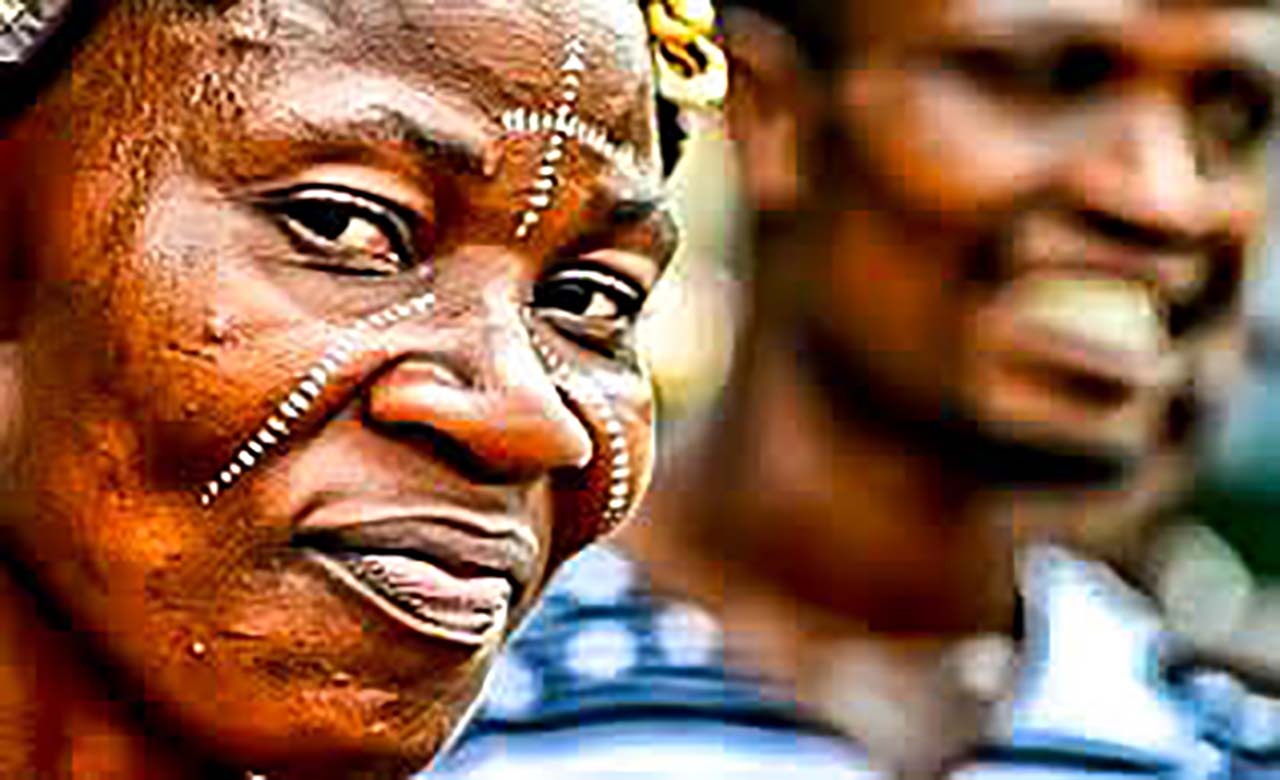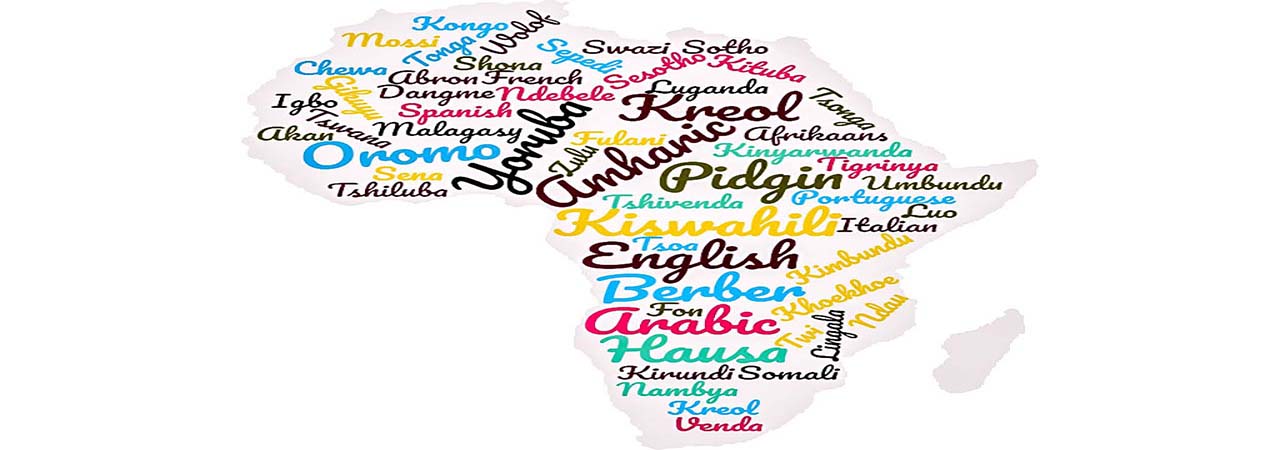Culture / Languages / Religions
Culture


The culture of Burkina Faso is extremely rich and diverse. Burkina Faso has a huge and unique culture with its traditional architecture, cuisine, festivals, folkloric ceremonies, crafts and social organization based on ancestral values, music, dance and clothing. The country is divided into several ethnic groups and large cultural areas. Burkina Faso has about sixty ethnic groups of demographic importance that have blended together over the centuries in perfect symbiosis. They are linked by deep-rooted cultural ties. The distribution of some of these communities is sometimes reduced to a few villages, while others occupy several provinces of the country.
It is difficult to group all these ethnic groups into families that are more or less similar, as each one has its own particularity. However, a few criteria make it possible to associate certain ethnic groups in a larger group according to language kinship, customs and traditions, social organization, methods of developing the environment, habitat, etc. Each ethnic group has its own history, beliefs, dances, language, architecture and traditions. This ethnic diversity also leads to an abundance of rites, customs and languages. The habitat is original and varied, the natural and archaeological sites are well preserved and the flora and fauna are very varied etc.
Some ethnic groups in Burkina Faso
The Mossi

The Mossi are a West African people settled in central Burkina Faso and in the north of Ghana, Togo and the Ivory Coast. In Burkina Faso, they are found in the villages of the Nazinon and Nakambé river basins. The Mossi are the majority ethnic group in Burkina Faso, constituting more than 52% of the population, or about 6 to 10 million people. They occupy the largest area of the country and the central region of Burkina is called “the Mossi plateau”. The common language of the Mossi is Mooré, which belongs to the Gur linguistic group, although as in all the other communities of the country there are variations according to the terroirs.
The Peulh

Also known as Foulani, Fulbhés, Fulfuldé, Pular and Fellata, the Fulani are a people settled throughout West Africa and the Sahelo-Saharan strip. The Fulani are the best-known nomadic pastoralists in Africa. They are present in most West African countries (Senegal, Gambia, Guinea-Bissau, Guinea, Burkina Faso, Mali, Niger, Benin, Togo or Ghana) but also in some Central African countries (Cameroon, Chad, and Central African Republic). The African Fulani population is estimated at nearly 40 million people. In Burkina Faso, the Fulani represent about 8.5% of the population. They are mostly Muslims, and their dispersion and mobility have encouraged exchanges and interbreeding
with other populations, particularly between the Maghreb and sub-Saharan populations. They are easily recognizable by their often light skin and fine facial features.
The Gourmantché

Also known as Gurma or Gorma, the Gourmantché are an African ethnic group, living in Burkina Faso, around Fada N’Gourma, but also in parts of Togo, Benin, and southwestern Niger. Their current population is estimated at around 1,500,000 individuals and they are particularly recognizable by the long scarification marks on each side of their face from the temples to the chin. They occupy one of the largest territories in Burkina Faso and are found in the east of the country, bordering Benin and partly bordering Togo and Niger. Like the other Burkinabe communities, they are made up of several linguistic and cultural groups, including the Bassari or the Moba.
The Dioula

The Dioula are a West African population found mainly in Burkina Faso, Côte d’Ivoire and Mali. There are multiple variants, Dabakala, Dabakara, Diouala, Dioulas, Diula, Djula, Doula, Duala, Dualas, Dyoula, Dyoulas, Dyoura, Dyulanke, Dyula, Dyulas, Jula, Juula, Wangara, Wankara etc. The language spoken by the Dioula is Dioula. The name Dioula means “traders” in Malinké, as the Dioula live exclusively from trade. They have always been the largest traders in West Africa and control several sectors of activity. The Dioula represent about 4% of the Burkinabe population.
The Bissa

The Bisa are a West African population, living mainly in Burkina Faso, Ghana, Côte d’Ivoire and northern Togo. In Burkina Faso, the Bissa are a small group living south of Tenkodogo, on the borders of Ghana and Togo, more precisely in the provinces of Boulgou and Koulpélogo. Their language is part of the Mande group. The Bissa are estimated to represent about 4% of the population of Burkina Faso. They seem to have settled along the White Volta area in the year 1300 and are known as great farmers. The main crops are maize, rice, groundnuts and cotton. The cultivation of groundnuts is an important part of Bissa culture, and they cook them in all forms.
The Lobi

The Lobi are a West African people living in the southwest of Burkina Faso, the northwest of Ghana and the northeast of Côte d’Ivoire. The Lobi represent about 4% of the population of Burkina Faso and 1.8% of the population of Côte d’Ivoire. They are related to the Gan, Dagara or Birifor peoples, with whom they share a common geographical and cultural origin. Over time, these peoples have managed to preserve their cultures, traditions and, above all, a well-structured social organization. They are farmers, breeders, but also gold diggers and potters. The dispersion of the habitat in Lobi country is all the more striking, the houses are at an arc distance from each other. The concession is
made up of a single hut surrounded by vegetable gardens and fields, which gives the impression of a vast village with no apparent core. The square-shaped earthen dwelling comprises several rooms distributed around a central core. The roof is flat with small openings, including access for the inhabitants to climb onto the roof and defend the family in case of attack. They are reputed to be both shady and good archers.
The Bobo

The Bobo are a West African population living mainly in the northwest of Burkina Faso, also across the border from Mali. The town of Bobo-Dioulasso was named after them in 1904, which means “the home of the Bobo-Dioula”. The Bobo represent about 4.8% of the Burkinabe population. They are farmers and mainly grow millet, sorghum and cotton. The language spoken is Bobo, which belongs to the large Gur language group with an estimated 100,000 speakers in Burkina Faso. They are subdivided into 3 subgroups: the Bobo-Dioula who come from Mali, who founded Bobo-Dioulasso and who live there, the Bobo-fing who live mainly along the KOU River, west of Bobo-Dioulasso and
the Bobo Woulé or Bwa who live east and north of Bobo-Dioulasso.
The Sénoufo

Also known as “Siéna, Sénéfo, Séné, Syénambélé or Bamana”, the Senoufo are a West African population present in Burkina Faso, southern Mali and Côte d’Ivoire. The Senoufo country counts about 1,500,000 people divided into about thirty sub-groups. The Senoufo are estimated to represent about 4.5% of the population of Burkina Faso. Each sub-group has its own characteristics, but there are several cultural traits that unite the Senoufo. They are considered to be the oldest populations settled in Burkina Faso. They are mainly spread over the provinces of Kénédougou and Léraba. They live mainly from agriculture, in particular the cultivation of rice, millet, maize, yams,
cotton, shea butter, mangoes and tea, but they are also recognized as excellent craftsmen and legendary hunters.
The Gourounsi

The Gourounsi are a West African population present in Burkina Faso and Ghana. They are made up of several sub-groups spread along the northern border of Ghana as far as the towns of Koudougou and Réo. The Gourounsi are estimated to represent about 4.5% of the population of Burkina Faso. The Gurunsi sub-ethnic groups include the Kassena, who live in the region of Pô, Tiébélé and Léo, the Lélé, who live in the region of Réo, Ténado and Didyr, the Nouni, who live in the region of Léo, Pouni and Zawara, the Nounouma, who live in the region of Tchériba and the Sissala, who live in the region of Léo. According to some experts, the Gourounsis people originated in the Lake Chad region
and historical studies have confirmed their presence in Burkina since the 12th century.
The Dogon

The Dogon are mainly present in eastern Mali, in the Bandiagara region, but there are a few isolated Dogon villages in Burkina Faso, more precisely along the Malian border. The language spoken is Dogon, which includes several other languages. Dogon architecture is world famous and they have a very strong cultural particularism accentuated by a language with unique origins. They are primarily farmers, blacksmiths and are also known for their cosmogony and sculptures.
The Tuareg

The Tuareg are the emblematic people of the Sahara desert. They are known as the blue men, as much for the colour of their boubous as for the colour of their skin, which is sometimes tainted by the indigo dye of their clothes. They are nomadic peoples who can be found in Burkina Faso, Mali, Niger, Algeria, Libya, etc. The desert areas of the extreme north of Burkina Faso correspond to their southernmost nomadic zone. They speak the Berber language and have established themselves over time as the absolute lords of the desert.
The languages


The official language spoken in Burkina Faso is French, the language of education, justice and administration. French plays a unifying role for the country and is spoken by 80% of the population. Burkina Faso has about sixty ethnic groups and a multitude of languages are spoken on the national territory. There are 4 main language groups: Mooré, Fulfudé (or Peul), Dioula and Bissa. Mooré is spoken by the Mossi peoples who represent about 52% of the population, Fulfulde or Peul is spoken by the Peul peoples who represent about 8.5% of the population, Dioula is spoken by the Dioula peoples who represent about 4% of the population, Bissa is spoken by the Bissas who represent about 4% of the population. Several other linguistic subgroups in more or less equal proportions are also present in Burkina Faso, 81 African languages have been recorded in the country.
Religions and beliefs in Burkina Faso


Religions and various beliefs play an important role in the culture and daily life of the Burkinabe. A country in which beliefs and traditions are mixed with modernity. The majority of the Burkinabe population is Muslim (60.5%), while Christians account for 23.2%, of whom 19% are Catholics and 4.2% Protestants, 15.3% are animists, 0.6% other religions and 0.4% no religion. Burkina Faso is known for its religious tolerance and the freedom to practice a religion of one’s choice is guaranteed by law.
